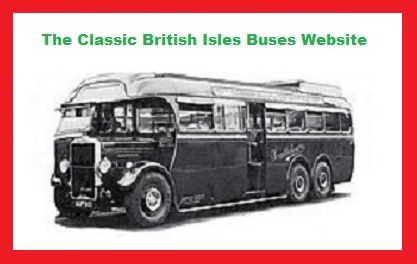

The Classic British Isles Buses Website
Transport in China - trucks (by Dick Gilbert)
Last updated 27 August 2024
Email Events diary Past events list Classified adverts Classic U.K. Buses Classic Irish Buses Classic Manx Buses
| Coaches | Aircraft | Single deck buses | Double deck buses and trolleybuses | Trucks |
Another visit to some transport from around the world. This time it's a look at the People's Republic of China, and here is a brief review of non-bus oddments I saw in my travels.
I visited China in October 2013, stopping in Shanghai, Xi'an and Beijing. Traditionally the view of China is that it's full of bicycles. That may have been true in the past, but - certainly in the cities - not now. However the heritage of those bicycles means that there are no old cars. Very few motor vehicles looked to be more than about ten years old. In fact even the bicycles have been replaced in many cases by electric bikes. These are cheap and subsidised, as part of a government scheme to reduce pollution.
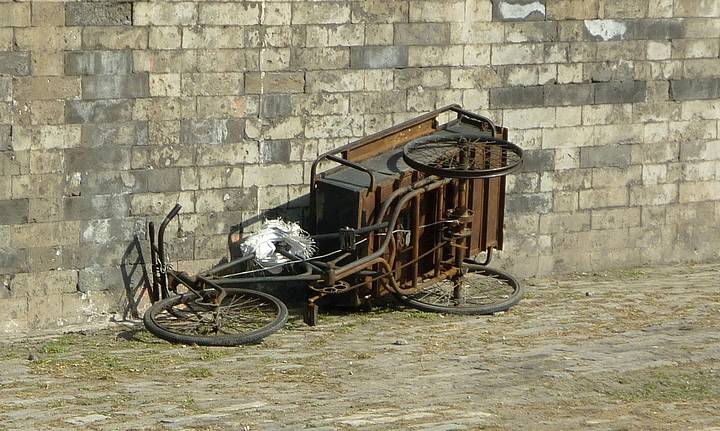
Sign of the times: China (or the bits we saw of it) is a tidy country. Rubbish is not left lying about in the public places where tourists go. So this sight inside a courtyard of the Forbidden City in Beijing was a surprise. But I guess it tells the story that a rusty old pushbike is a thing of the past, and China is now hurtling into the 21st century.
So here is a selection of various non-bus vehicles that I was able to photograph. A lot of the technical information is my best guesswork, but I am more than happy to receive corrections or more detail about the vehicles or manufacturers.
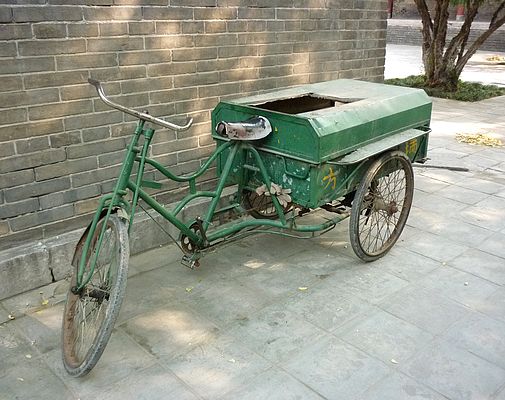
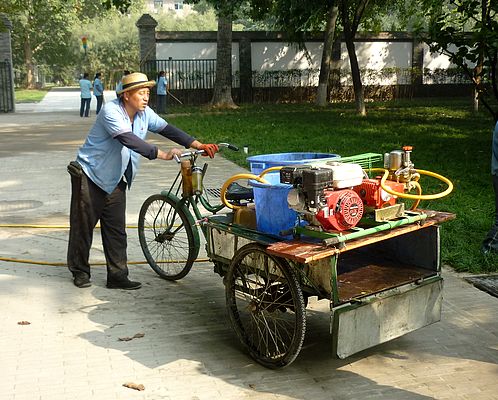
Traditional pedal power in the garden of a pagoda in Xi'an. On the right, although the vehicle is motorised, that's just to power the pressure-washer on the back; the guy still has to pedal it when he wants to go anywhere. Gradually the bicycle is disappearing from the cities.
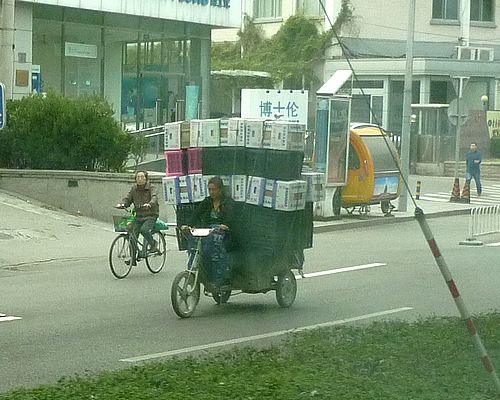
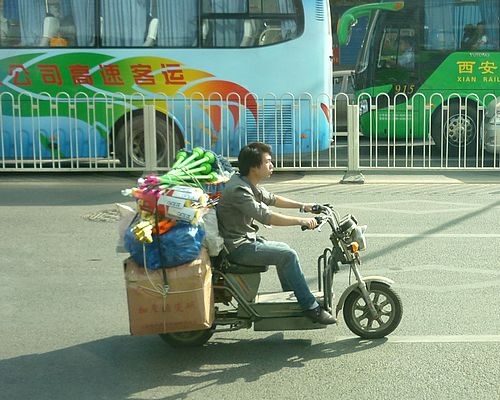
And here is the new electric bike phenomenon, in Beijing and Xi'an. They're everywhere, they're fast and they're very quiet, so they creep up on you at speed like a silent death, and then BEEP loudly. In the left hand picture the pedal cyclist watches ruefully as she is overtaken by the march of progress.
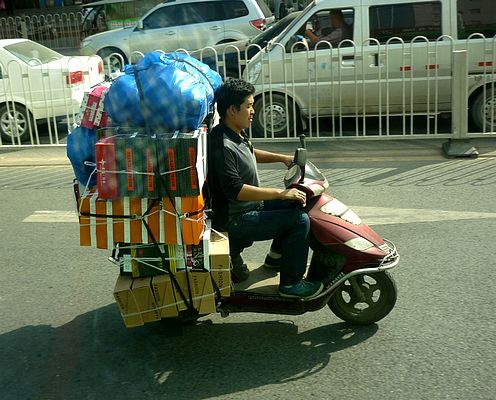
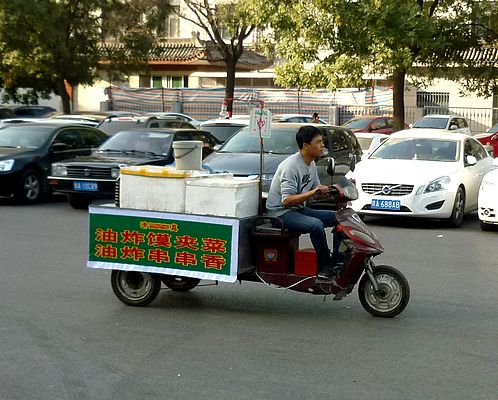
Electric bikes come in larger sizes too, which makes their silent arrival even more of a shock. These two are seen in Xi'an. I'm not sure what the guy on the right is carrying, but I have a uneasy suspicion that you're supposed to eat it.
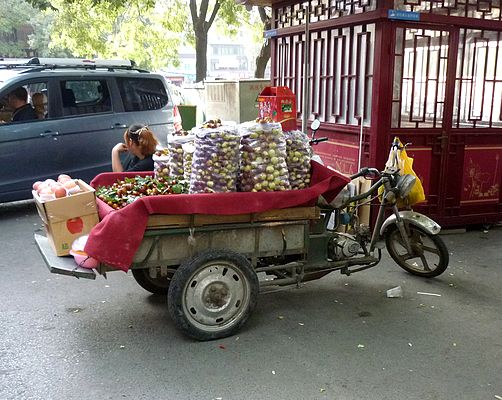
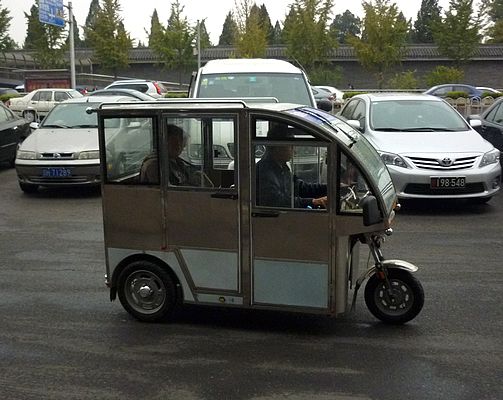
Petrol-engined motorbikes and trikes are also common, but are gradually being replaced, it would seem. The one on the left (in Xi'an) looks quite old for a Chinese machine, while the tin box on the right is a cheap form of taxi in Beijing. Often these passenger trikes have a sideways-facing bench in the back, and larger examples can seat up to four!
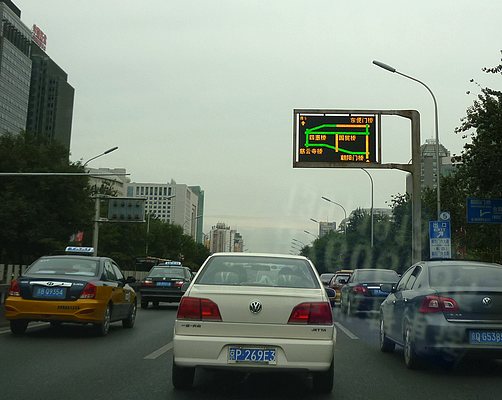
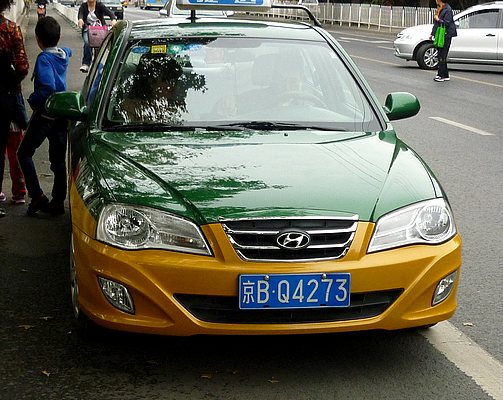
A taxi ride in Beijing: In the left-hand picture you can see the overhanging road signs that show levels of current congestion ahead. We are at the bottom right-hand corner of the sign and it shows that the road in front has medium (yellow) congestion, whereas a diversion to the left would give us a clear (green) run. All very clever. Two Volkswagens can be seen in front, and this is very common - the VW salesman has done a fantastic job in China. A typical taxi can be seen at the left of the picture. In the right-hand picture we can see a Beijing taxi up close, and that logo surely means Hyundai. Our taxi driver insisted that these cars were called See-Ann-Dar (or something that sounded like that), but the fact that they all either had ELANTRA or SONATA written on the back establishes that they are indeed Hyundai cars - or a licence-built version of them.
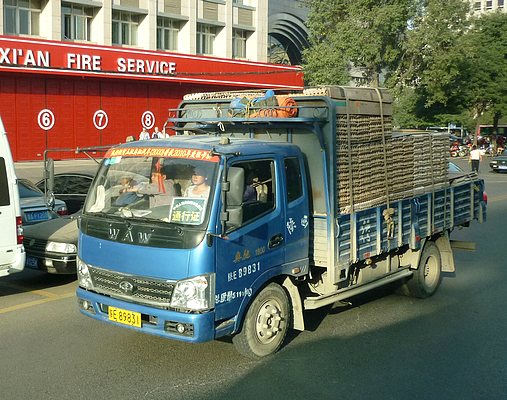
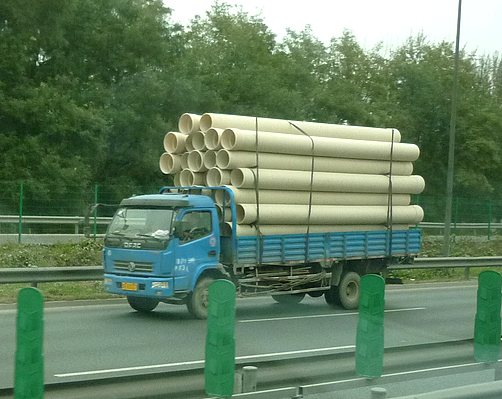
 WAW: Let's look at some light trucks. In central Xi'an is this WAW
Aochi 1700 2-tonner, made by the Shandong Wuzheng Group. The load would appear to be eggs.
WAW: Let's look at some light trucks. In central Xi'an is this WAW
Aochi 1700 2-tonner, made by the Shandong Wuzheng Group. The load would appear to be eggs.
 DONGFENG: Whizzing by on the opposite carriageway while driving
out from Beijing to the Great Wall was this Dongfeng (East Wind) truck with a substantial load of pipes. Dongfeng Motor Corporation
is a major truck manufacturer based in Wuhan, south-eastern China. I think they also make missiles.
DONGFENG: Whizzing by on the opposite carriageway while driving
out from Beijing to the Great Wall was this Dongfeng (East Wind) truck with a substantial load of pipes. Dongfeng Motor Corporation
is a major truck manufacturer based in Wuhan, south-eastern China. I think they also make missiles.
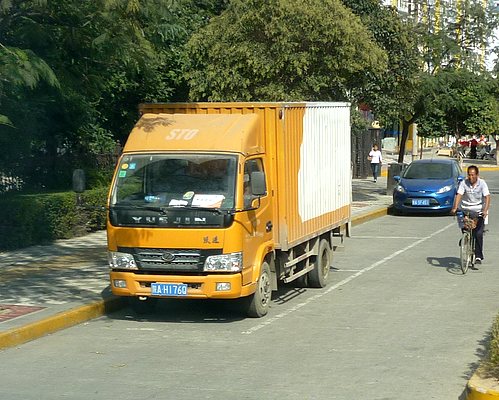
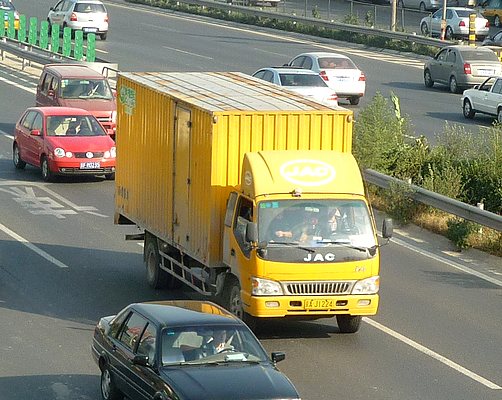
 YUEJIN: Here are a couple more. Spotted in Xi'an was this yellow
Yuejin van, possibly model NJ1041 - or possibly not. Yuejin trucks are manufactured in Shanghai by Nanjing Auto Import and Export Co
(NAVECO), established as a joint venture with IVECO in 1947.
YUEJIN: Here are a couple more. Spotted in Xi'an was this yellow
Yuejin van, possibly model NJ1041 - or possibly not. Yuejin trucks are manufactured in Shanghai by Nanjing Auto Import and Export Co
(NAVECO), established as a joint venture with IVECO in 1947.
 JAC: Seen from an overpass near the Beijing 2008 Olympic site is
this JAC van, probably an HFC1060 5-tonner. JAC Motors (Jianghuai Automobile Co) is primarily a truck and van builder, based at
Anhui in eastern China.
JAC: Seen from an overpass near the Beijing 2008 Olympic site is
this JAC van, probably an HFC1060 5-tonner. JAC Motors (Jianghuai Automobile Co) is primarily a truck and van builder, based at
Anhui in eastern China.
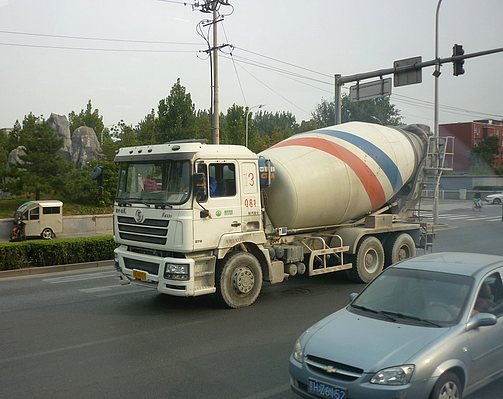
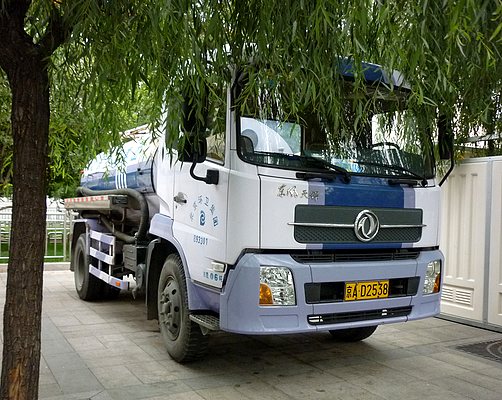
 SHACMAN: Something a little heavier, this is a Shacman F3000 5
cubic metre concrete mixer truck near the Temple of Heaven in Beijing. A larger 8x4 version is available. Note the little tin box
taxi on the left.
SHACMAN: Something a little heavier, this is a Shacman F3000 5
cubic metre concrete mixer truck near the Temple of Heaven in Beijing. A larger 8x4 version is available. Note the little tin box
taxi on the left.
 DONGFENG: Now here's something interesting. Hiding under a tree
on the edge of Tiananmen Square is this Dongfeng DFL1120 tanker/washer. Why? Well, a few days after we left China, a vehicle was
deliberately crashed into a rostrum under the picture of Chairman Mao in the Square, killing the three occupants and two bystanders.
In double-quick time, the fire was out, the wreck was cleared, and the ground washed and scrubbed. The Square was soon reopened with
no trace of the incident remaining. Now we know why the tanker waits under the tree (see it below, in action at that incident).
DONGFENG: Now here's something interesting. Hiding under a tree
on the edge of Tiananmen Square is this Dongfeng DFL1120 tanker/washer. Why? Well, a few days after we left China, a vehicle was
deliberately crashed into a rostrum under the picture of Chairman Mao in the Square, killing the three occupants and two bystanders.
In double-quick time, the fire was out, the wreck was cleared, and the ground washed and scrubbed. The Square was soon reopened with
no trace of the incident remaining. Now we know why the tanker waits under the tree (see it below, in action at that incident).
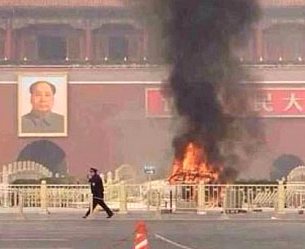
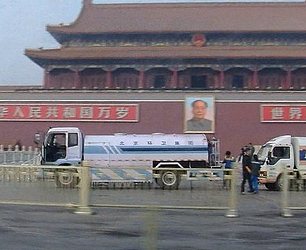
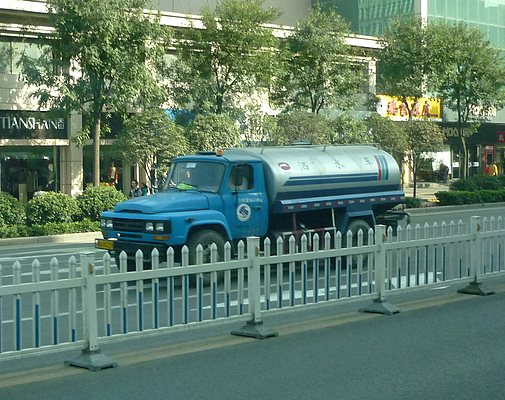
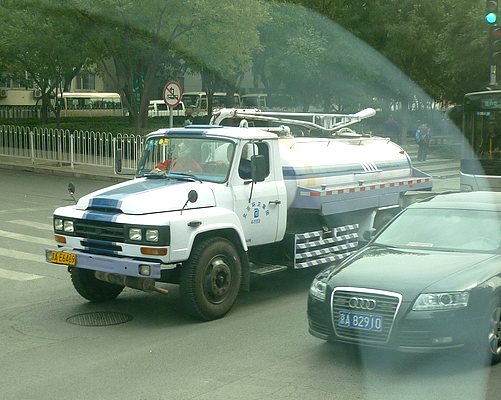
Two more tankers, looking a ltitle older, but I can't identify them. The one on the left is in the old part of Xi'an city, while the one on the right, seemingly a gulley-emptier, is on the north side of the Forbidden City, Beijing (sorry about the window reflection). Does anyone know who made these vehicles and how old they are?
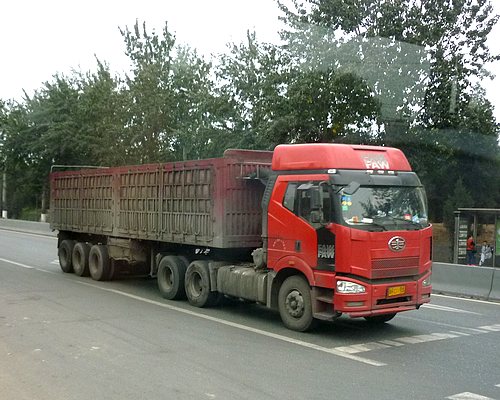
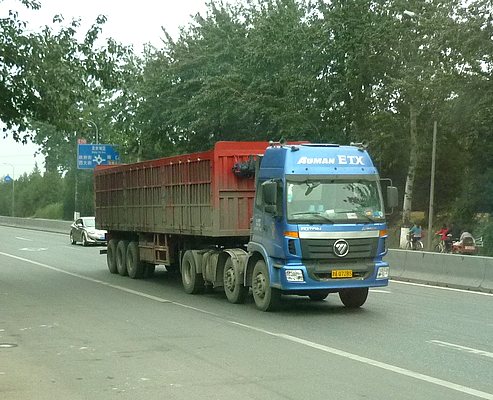
 FAW: Now for some bigger stuff, seen driving through Beijing. On the
left is an FAW J6. FAW Group Corporation dates back to the 1950s, and is based in Jilin, northeast China.
FAW: Now for some bigger stuff, seen driving through Beijing. On the
left is an FAW J6. FAW Group Corporation dates back to the 1950s, and is based in Jilin, northeast China.
 FOTON: Foton Auman ETX written on the front of this semi tractor
is actually the type of truck. It's a 6x4 with a Cummins 375hp engine. I only wish I could show you a picture of the stupendous
Chinese car transporters, but I just couldn't get a decent photo of one.
See this link to get a rough idea.
FOTON: Foton Auman ETX written on the front of this semi tractor
is actually the type of truck. It's a 6x4 with a Cummins 375hp engine. I only wish I could show you a picture of the stupendous
Chinese car transporters, but I just couldn't get a decent photo of one.
See this link to get a rough idea.
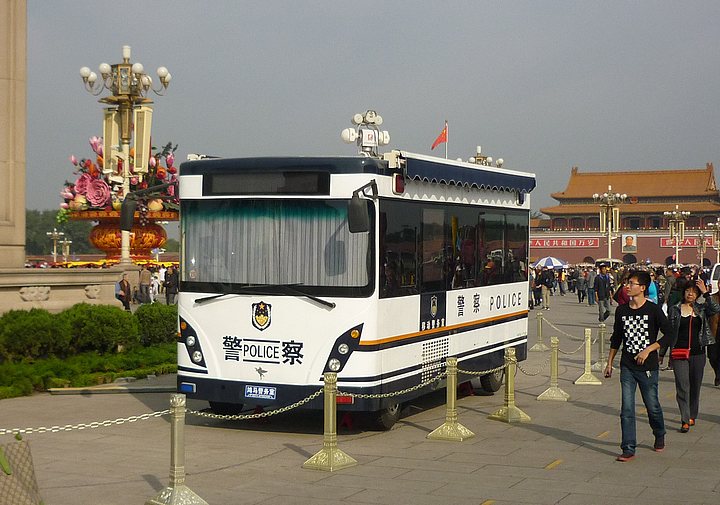
This odd Police mobile surveillance vehicle lives in the middle of Tiananmen Square, Beijing. I should know the rearing winged horse logo just below the word Police but I can't identify it at the moment.
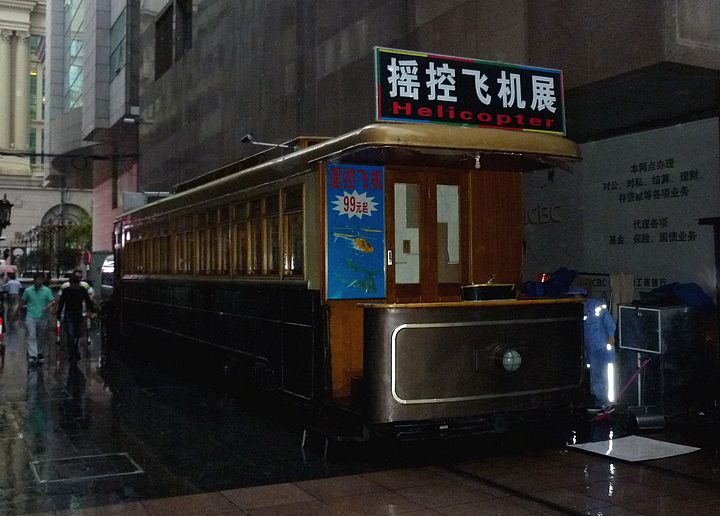
As I have mentioned elsewhere, we were on the edge of a heavy tropical storm for the whole 3 days we spent in Shanghai, and I can't describe how wet I was getting when I took this photo. Anyway it is not (as the sign might indicate) a helicopter, but an old Shanghai tramcar acting as a shop for radio-controlled model helicopters, located just off Nanjing Road (where trams used to run from 1908 to the 1970s). There are apparently two of them, but I only saw this one. Is it authentic or a replica? You can never be sure in China.
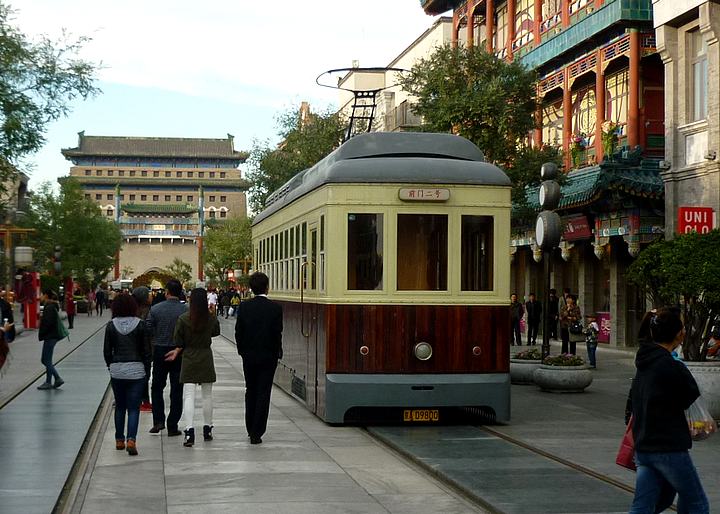
And here's a tramcar in Beijing. One of a pair, it took tourists and shoppers up and down Tiananmen Street's upmarket retail zone - presumably battery-powered. Trams ran in the city from 1899 until the late 1950s.
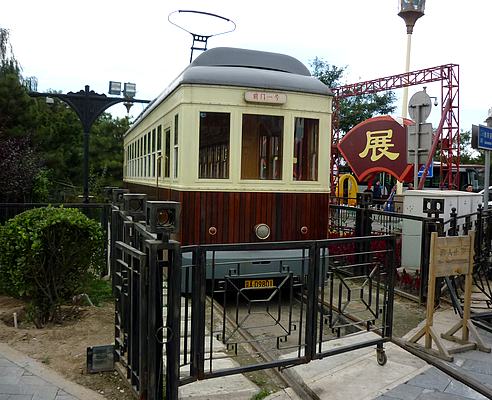
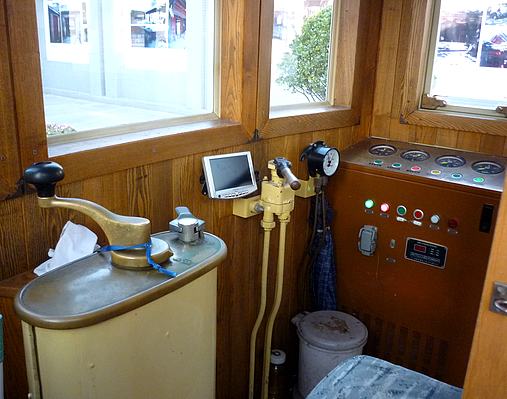
Here's the other one, which wasn't running on the day we were there. Are these genuine? I'm sure they are modern replicas (like pretty much everything else in Tiananmen Street), but some parts of the real thing seem to have been used, as can be seen in the view of the cab. Or maybe we are just being fooled again...
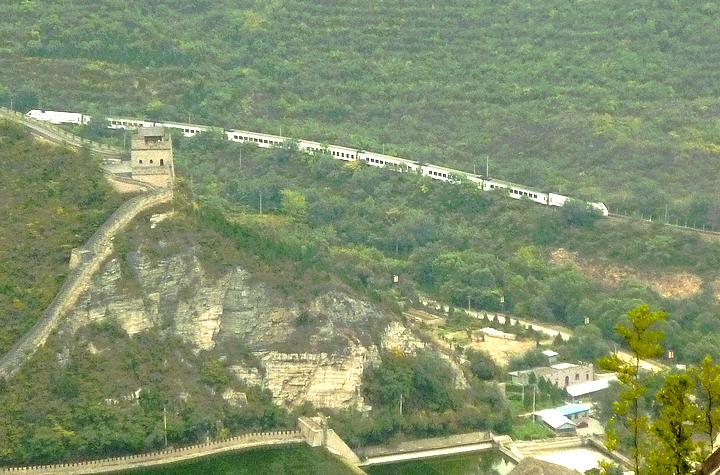
A brief look at trains. This is the Y-579 Tourist Express grinding its way noisily up the incline at Juyongguan Pass, seen from high up on the Great Wall of China on the opposite side of the valley. The train is about to disappear into a tunnel under the Great Wall, visible on the left and foreground. This service runs from Beijing to the station at Badaling, which provides access to another section of the Great Wall about 10 miles further west.
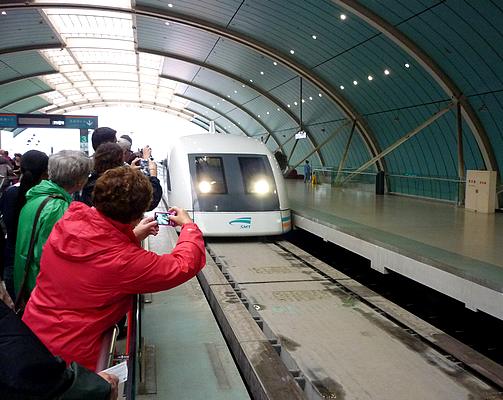
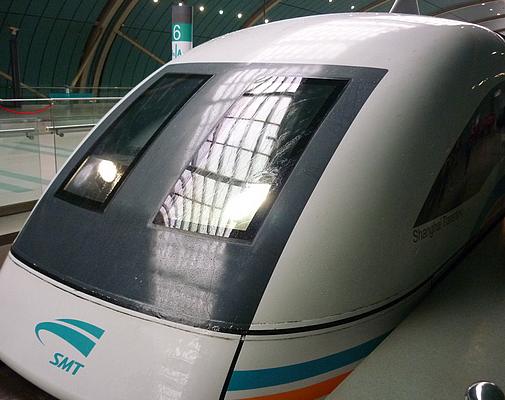
Finally I cannot ignore the amazing Shanghai Maglev Train which runs 30 kilometres from Shanghai city to the airport in an incredible 7 minutes and 22 seconds. Here we see the train arriving at its Shanghai station, and a close-up of the front, revealing a cracked windscreen! It runs on rubber wheels for the first 120 km/h, and then floats on its magnetic suspension.
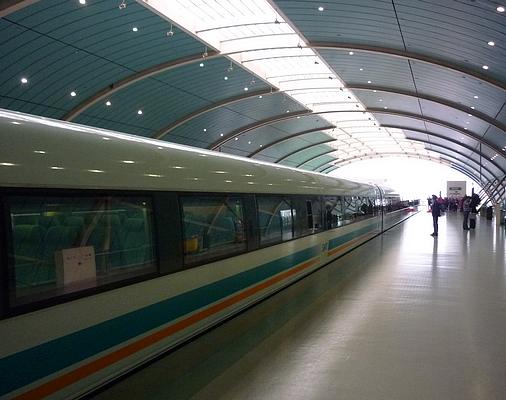
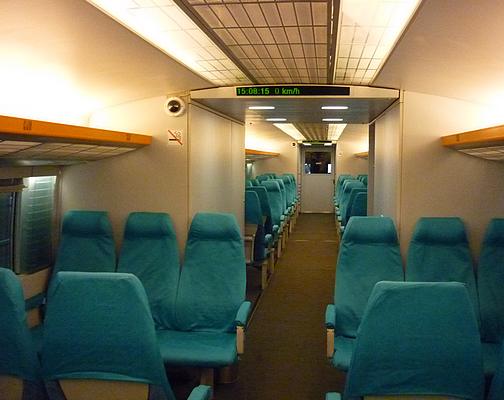
Inaugurated in 2004, it reaches 431 km/h (268 mph) at full speed, making it the fastest train in the world - faster than a Formula One car, but it only runs at full power for 2 hours each day, due to the amount and cost of the electrical power required. A display over the door (right) tells the passengers how fast they are going.

You can see the rate of acceleration from these snapshots of the ceiling display and, although the ride is certainly smooth, the sensation of speed is astounding. Our guide said that there was a prize for anyone who could take a photograph of the FRONT of the other train coming the other way (with a passing speed of over 500 mph). We waited, and then BOOM! - it was gone. Everybody jumped, and then laughed. Below is the picture I got. No prize for that.
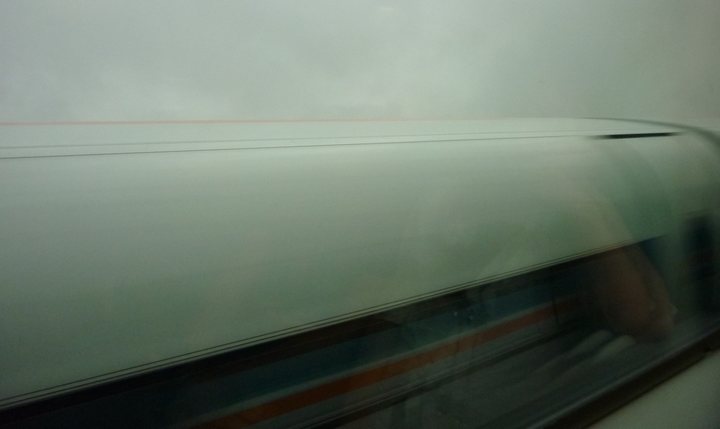
Email Events diary Past events list Classified adverts Classic U.K. Buses Classic Irish Buses Classic Manx Buses